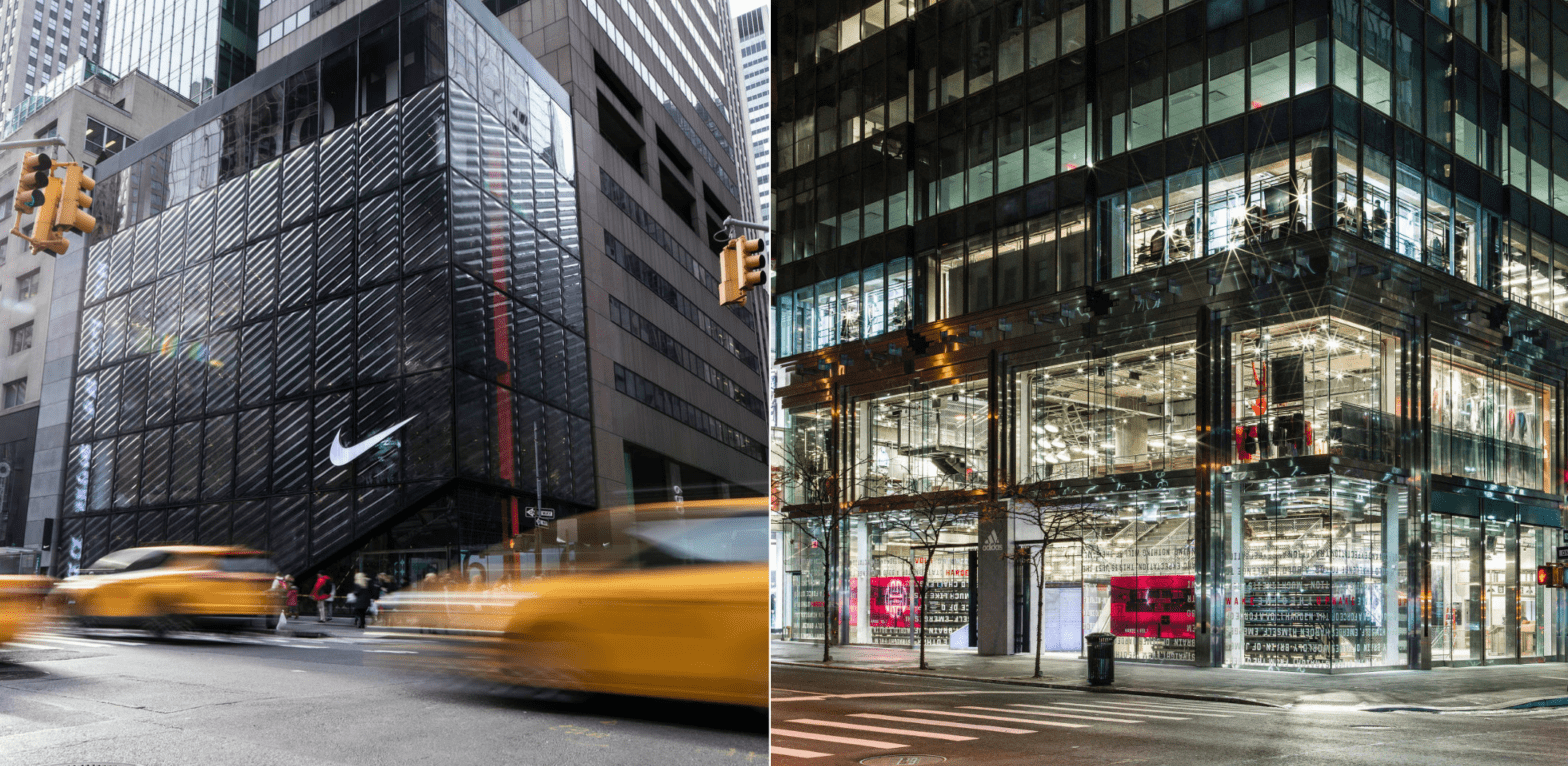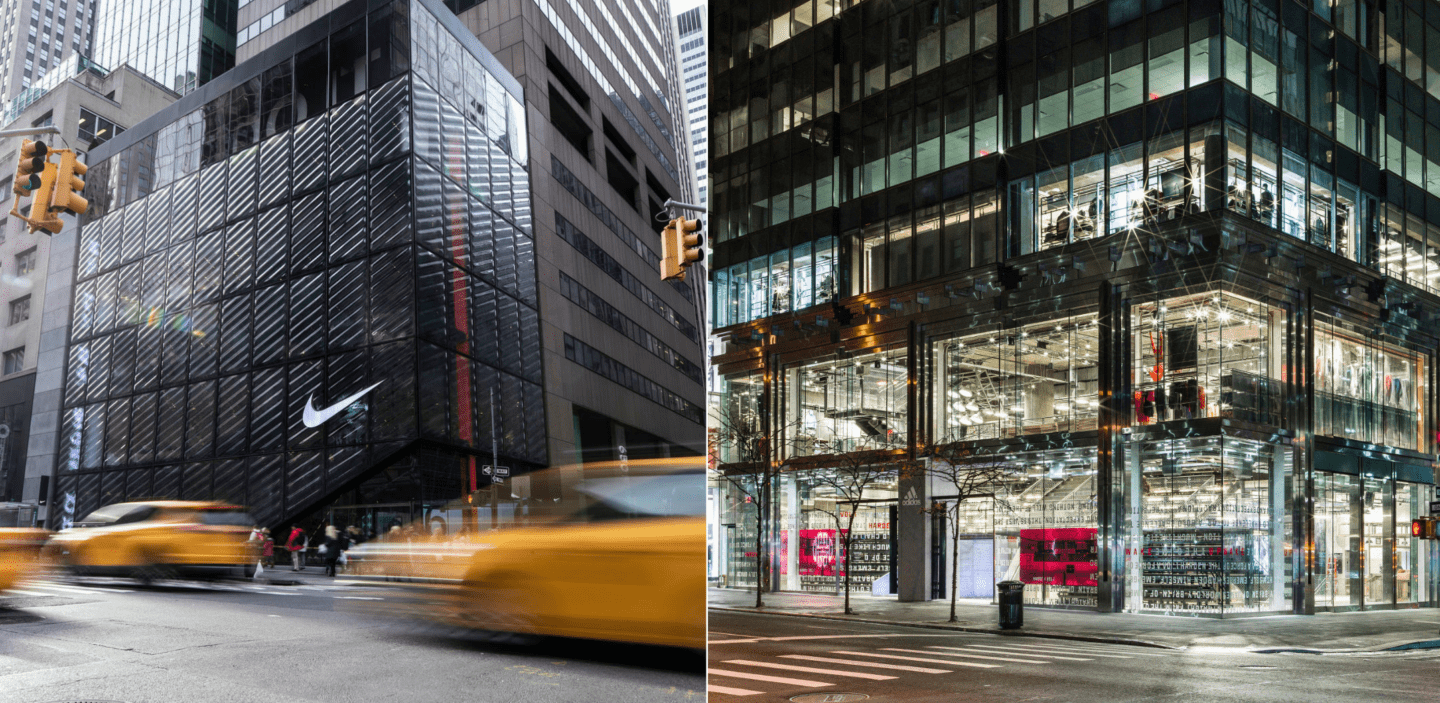
Nike vs. Adidas: A side-by-side comparison of two iconic New York stores
Nike and Adidas are two of the biggest, most well-known brands on the planet. They both have an international presence, millions of devoted customers and some of the best, most celebrated retail design concepts around.
As part of their arsenals of physical stores, both brands have huge flagships in the heart of New York City. These stores have received a lot of media attention and coverage since they opened, but is one better than the other?
We decided to do a side-by-side comparison of the Nike and Adidas stores in Manhattan to look at the most exciting elements of each and decide if one brand is a clear winner when it comes to offering the best in-store experiences for its customers.
1. Exterior Architecture
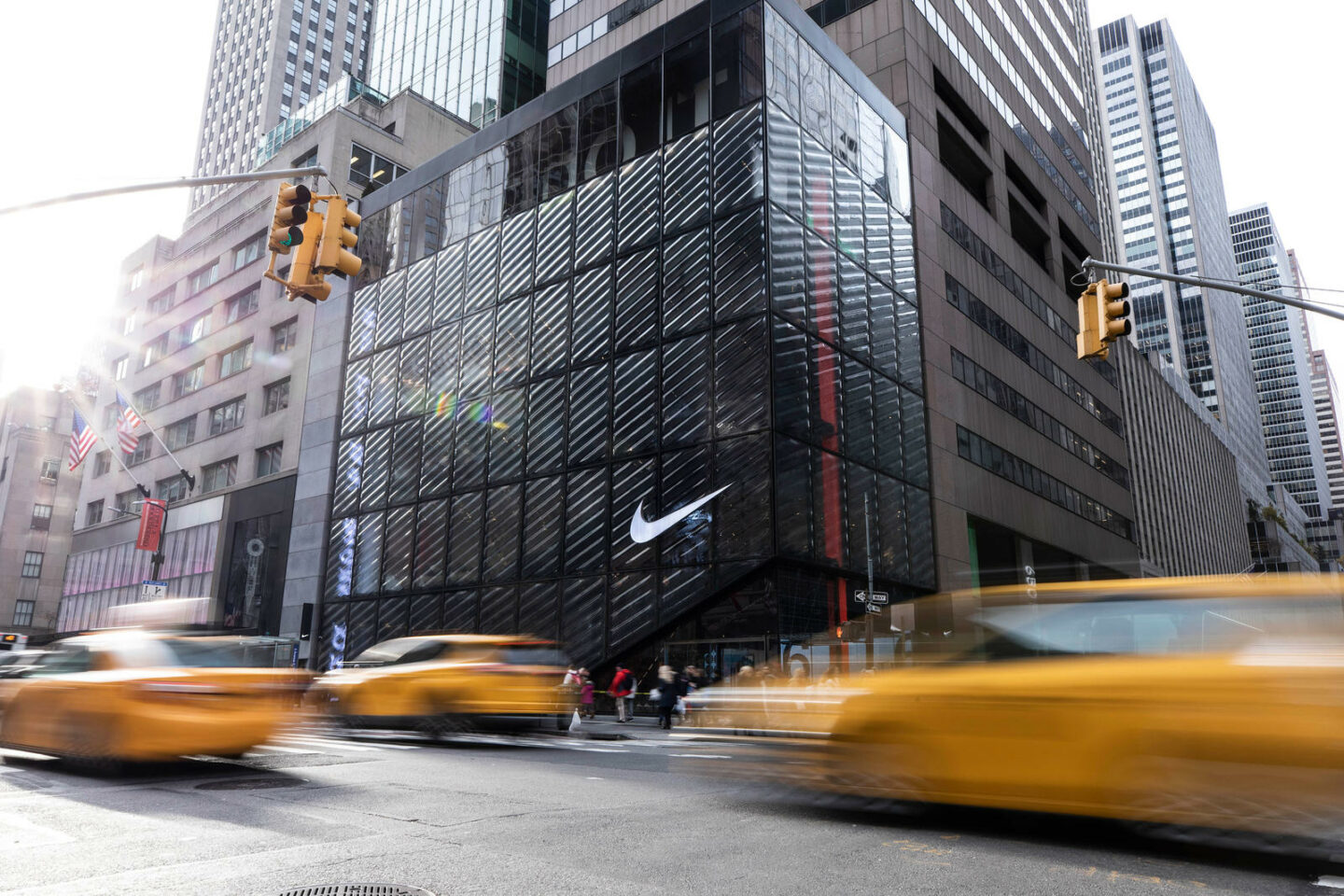
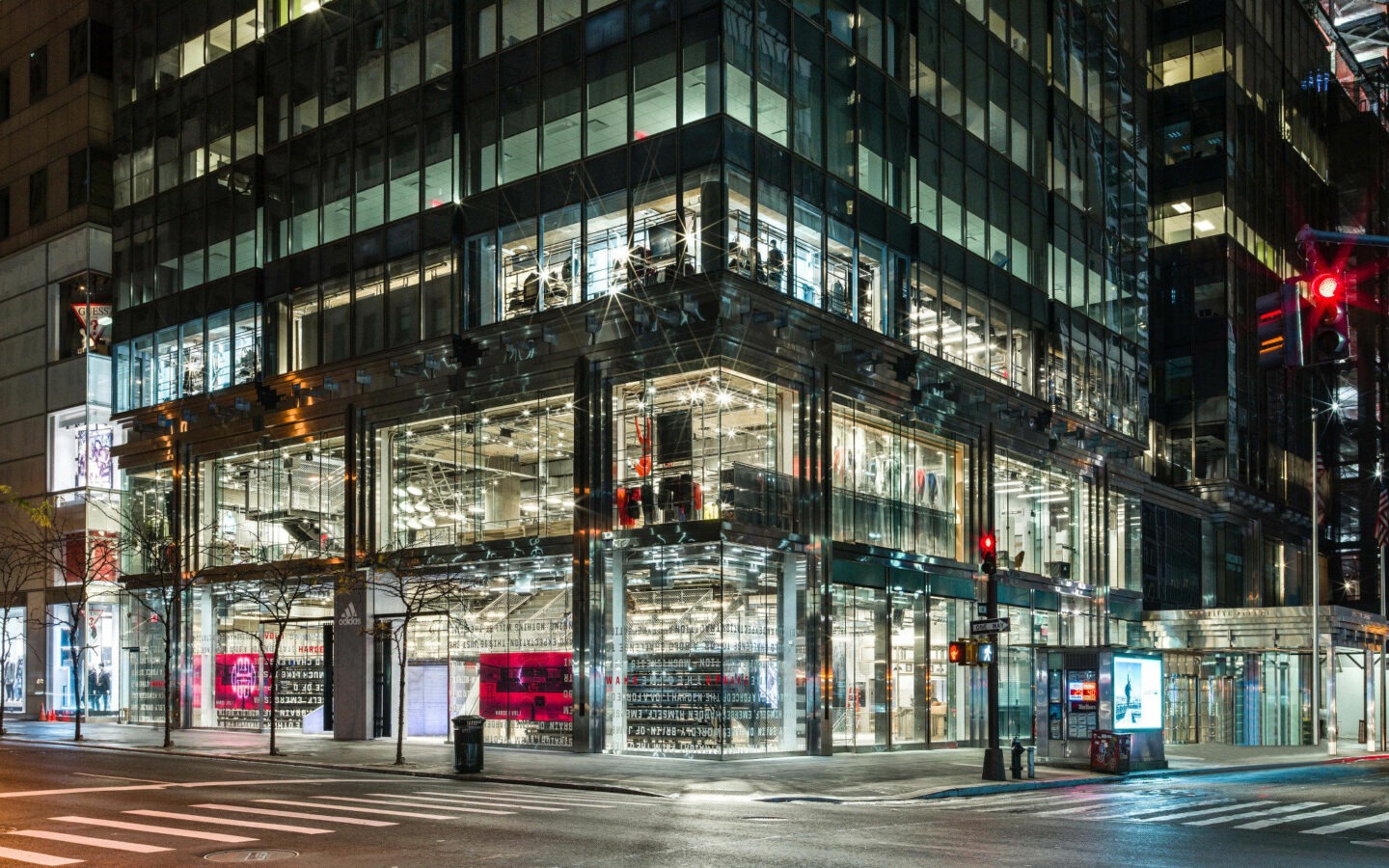
New York is one of the most visually-exciting, fast-paced places on earth, and both Nike and Adidas are well aware of this fact, making sure that the exterior facades of their Manhattan stores are designed to stand out in the concrete jungle.
Both stores use glass to their advantage, choosing to clad the majority of their exteriors in floor-to-ceiling glazed panels. This not only stands out against the adjacent grey buildings but also ensures that their interior lighting systems can work to full effect at night, transforming the stores into glowing beacons that draw customers inside to browse the products and services on offer.
2. Entrance Areas
The entrances of retail spaces are arguably one of the most important areas as they play host to the first interaction between a brand and its customers.
Nike and Adidas use high-impact lighting systems to accentuate tunnel-like interior architecture in ways that subtly draw the customer’s eyes straight into the heart of the stores.
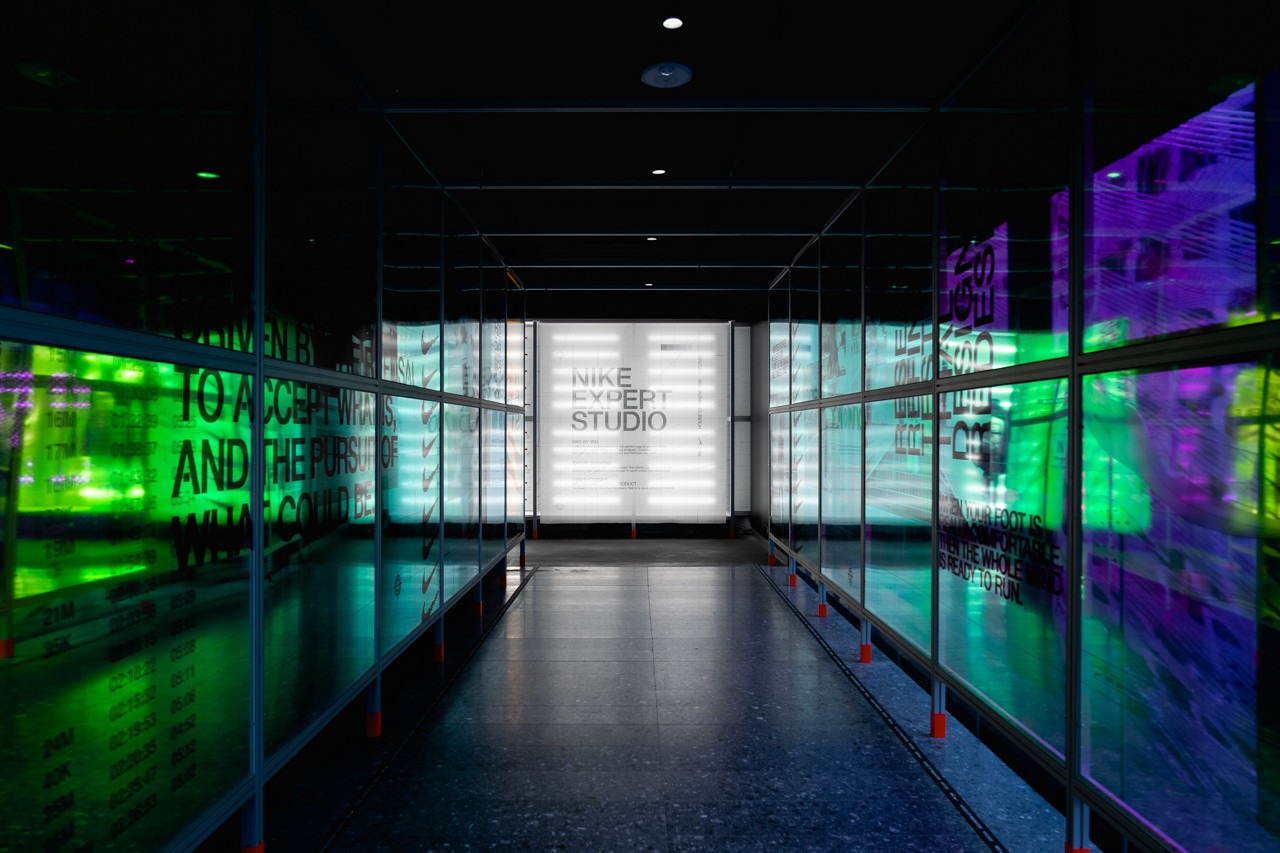
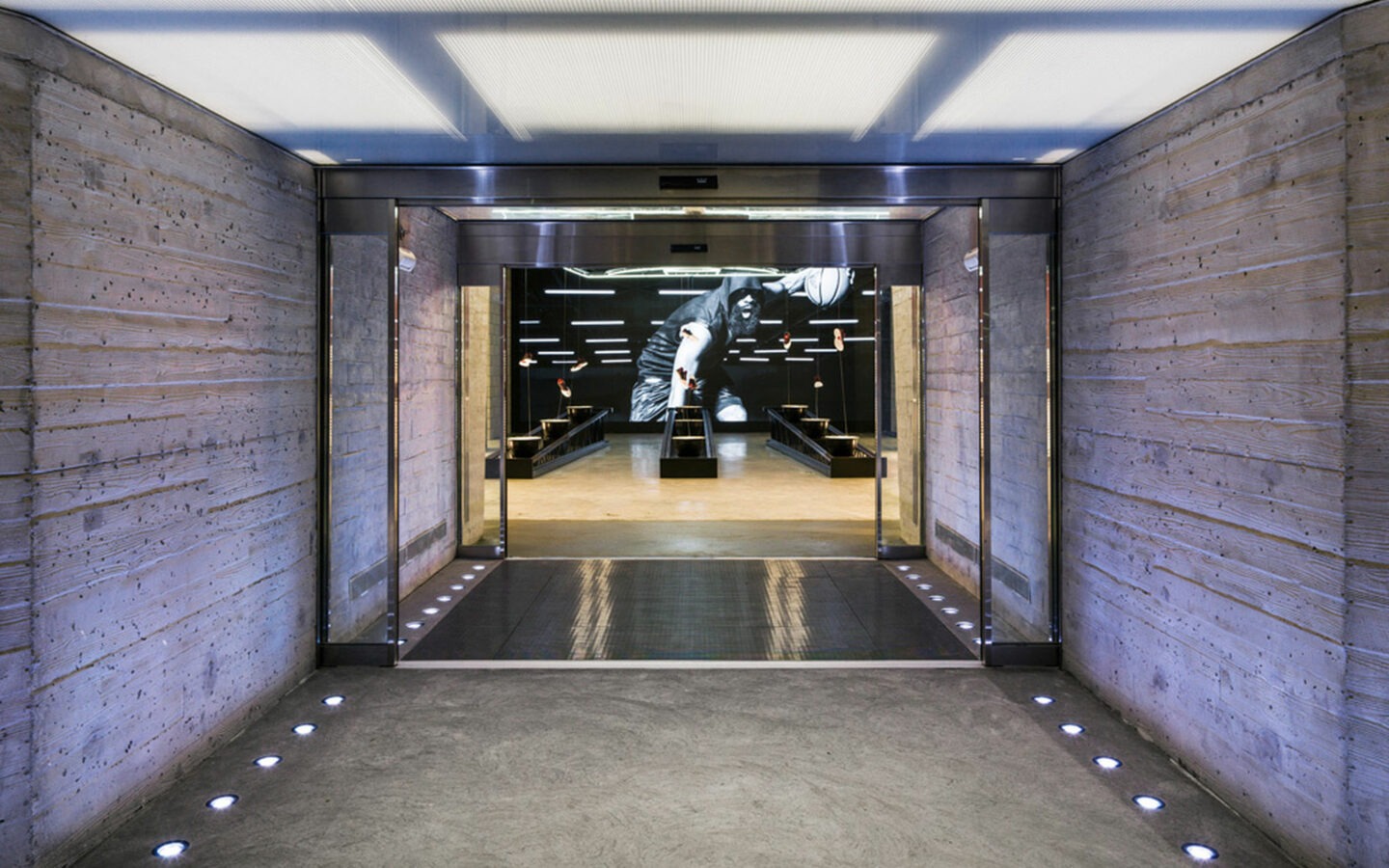
3. Product Displays
Both stores use a range of display types and merchandising systems to create a visually-dynamic space that caters to the browsing preferences of different customers and enables visual merchandising teams to present products as effectively as possible. Here are the ones that grabbed our attention the most.
Footwear displays
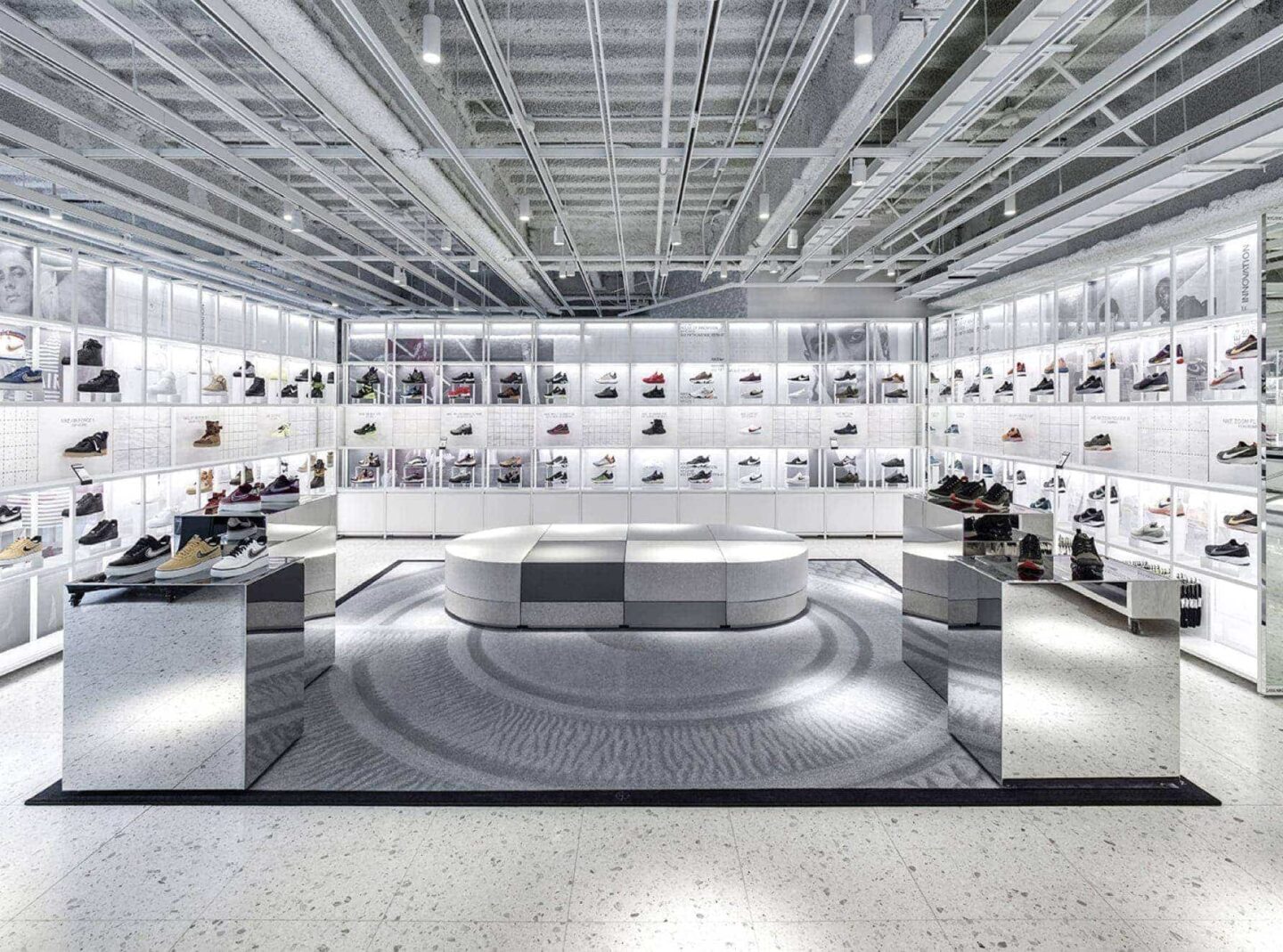
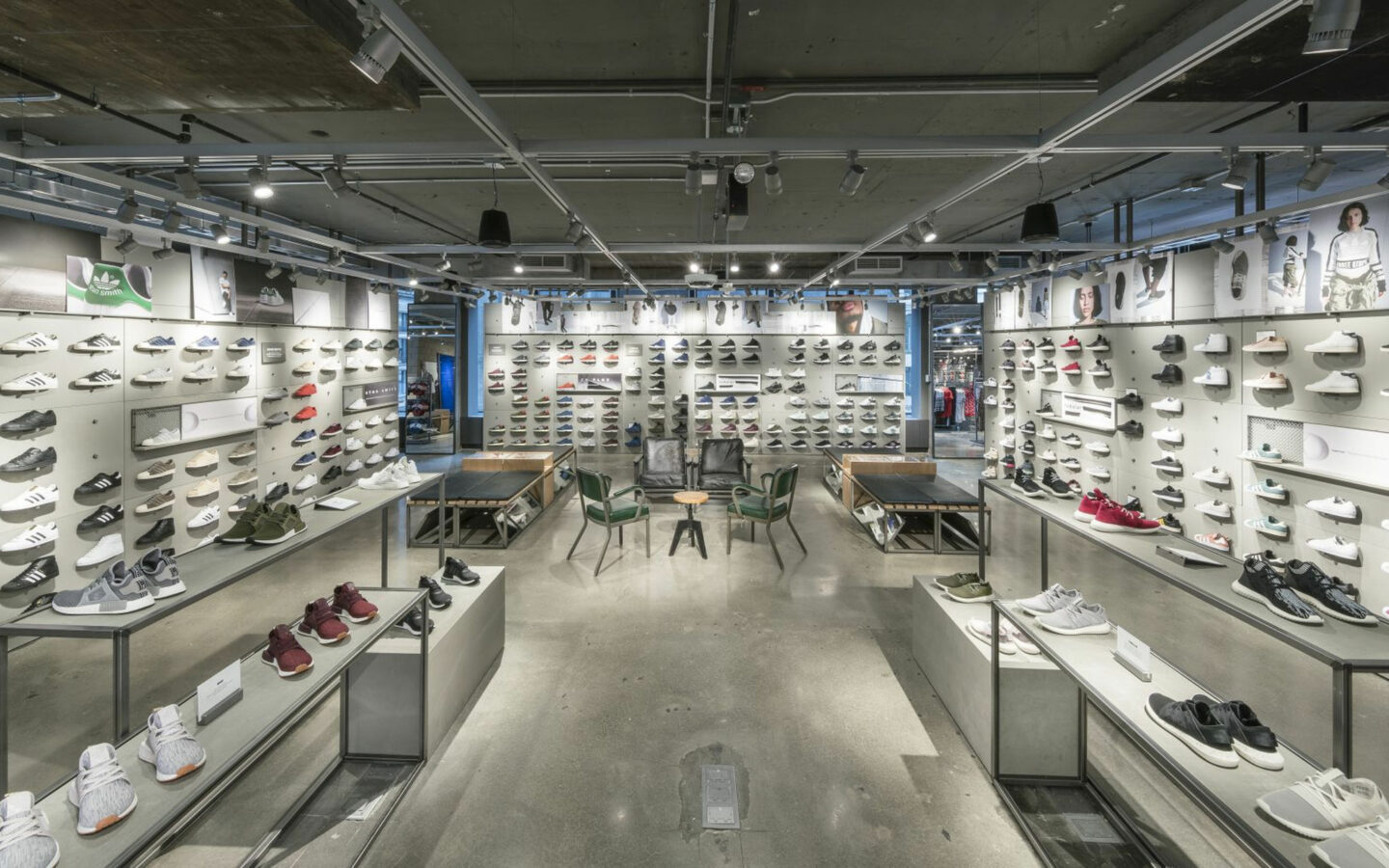
As you can see from the images of the footwear displays, both stores use very similar merchandising solutions and design schemes. Both use wall-mounted permimeter shelves to display row upon row of trainers whilst preserving the central areas for display plinths that are used to showcase hero products or newly-launched ranges.
Both stores also use minimalist colour schemes and stripped-back fixtures to create spaces in which the shoes take centre stage.
Free-standing displays
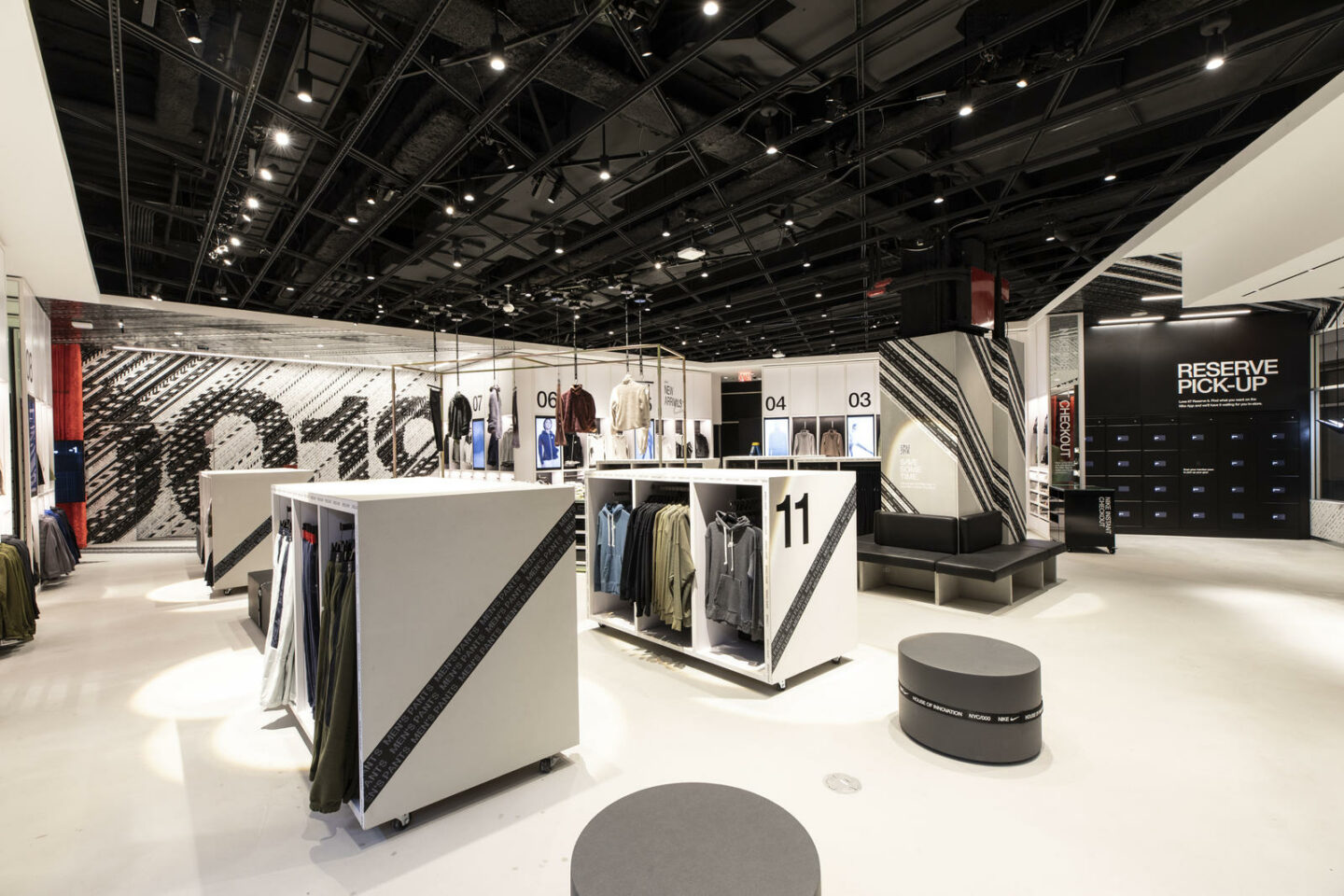
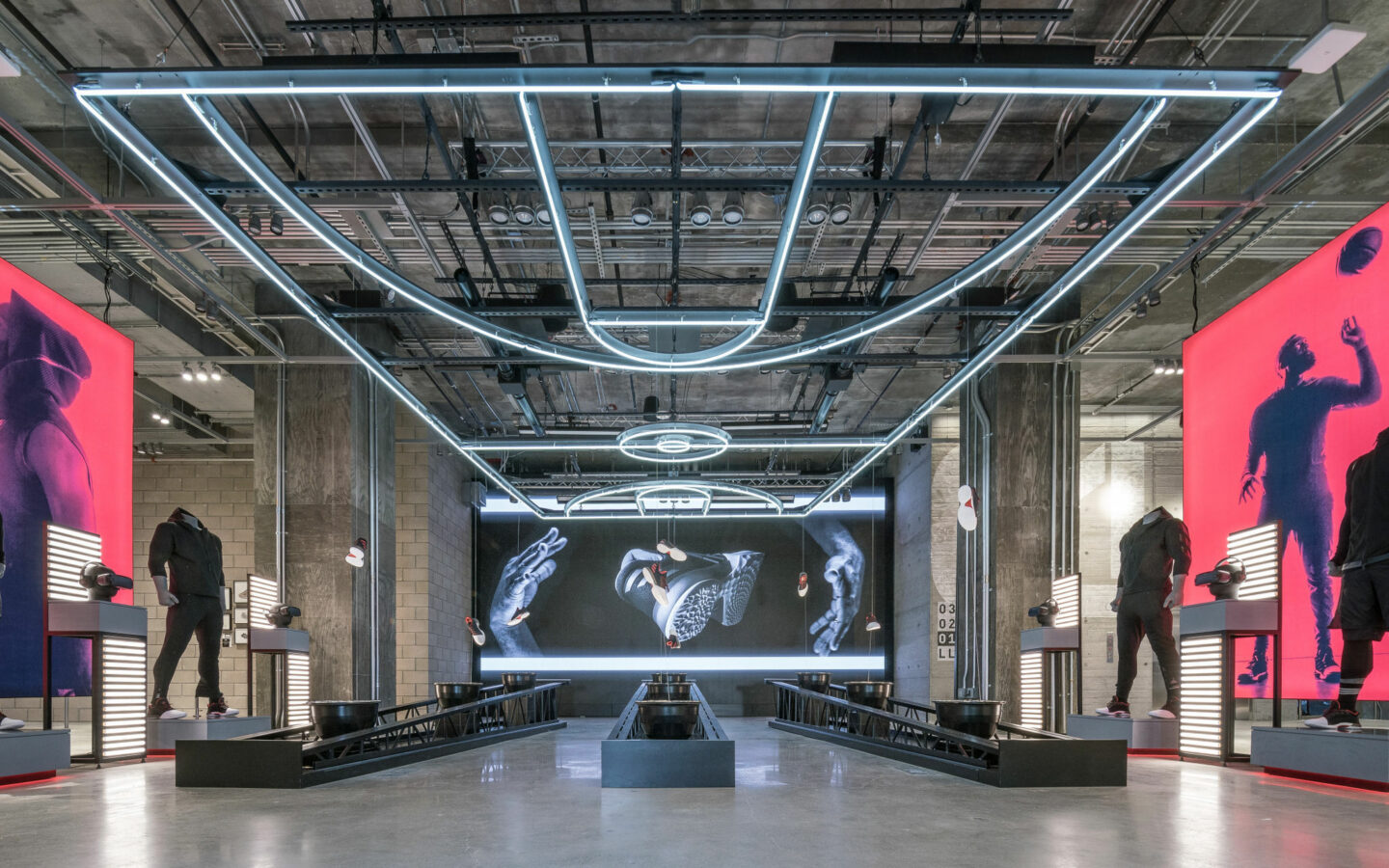
Nike’s product displays are set on a striking canvas of white walls and flooring which accentuates the almost clinical atmosphere of the store. This is in contrast with the Adidas store which sets its freestanding displays against darker floors and walls to create a dramatic atmosphere and draw attention to the illuminated court-shaped LED lighting fixture susepnded from the ceiling above.
4. In-store Experiences
Product testing
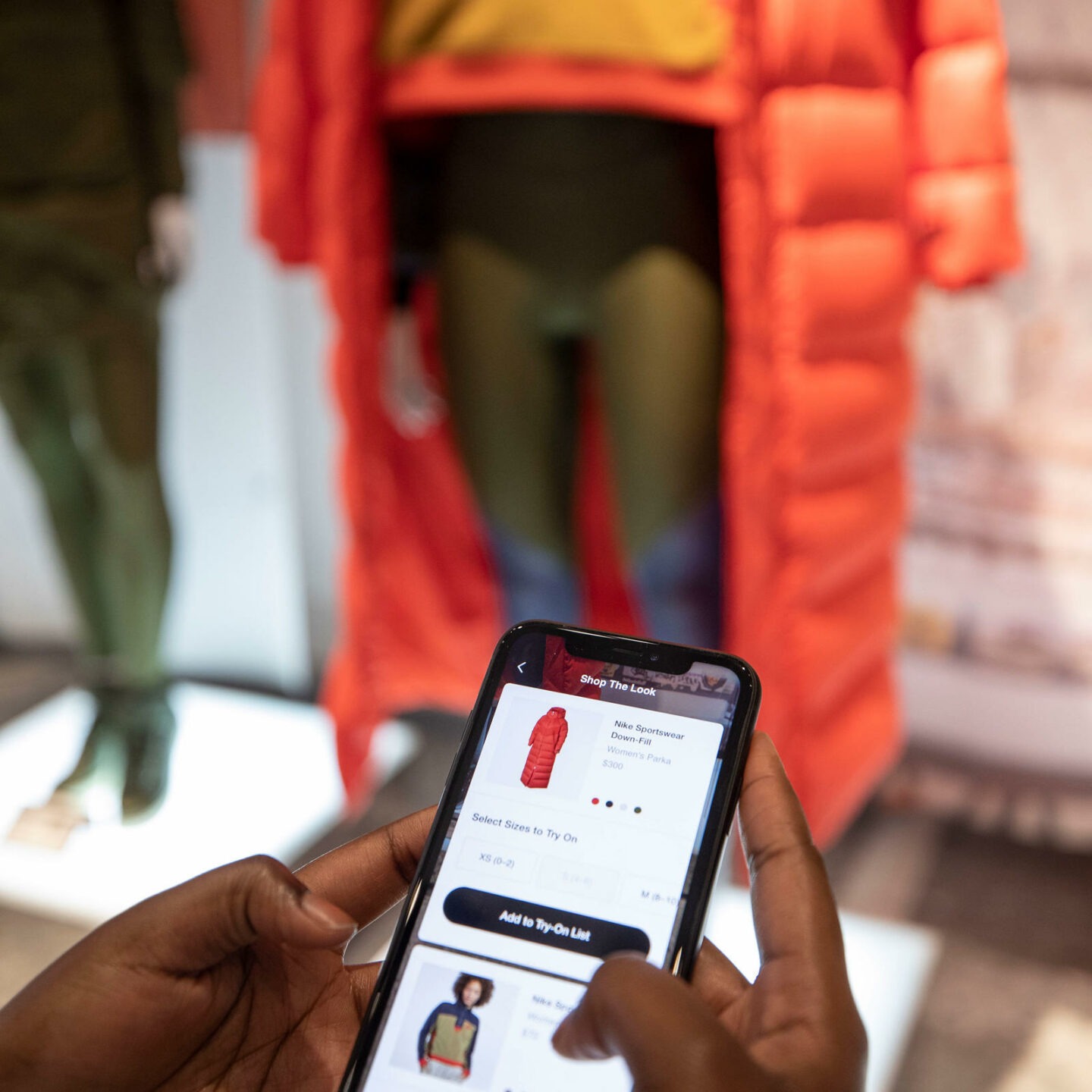

Nike creates an interactive space with the use of QR codes on the bases of its mannequins. By scanning the codes on their smart phones, shoppers can instantly browse through all the products that come together to form an outfit on display meaning they dont have to spend time searching the store to find everything they want. This is an excellent example of how Nike delivers a seamless omnichannel experience for its customers by fusing online and offline platforms together.
Adidas provides serious competition for Nike, though, where in-store experienes are concerned. Its New York flagship features ‘The Turf’ – a dedicated product testing area where budding footballers can try on the latest soccer boots and practice their free kicks. On top of this, the store has VR technologies that shoppers can use to immerse themselves in promotional materials created to showcase key products.
Customisation services
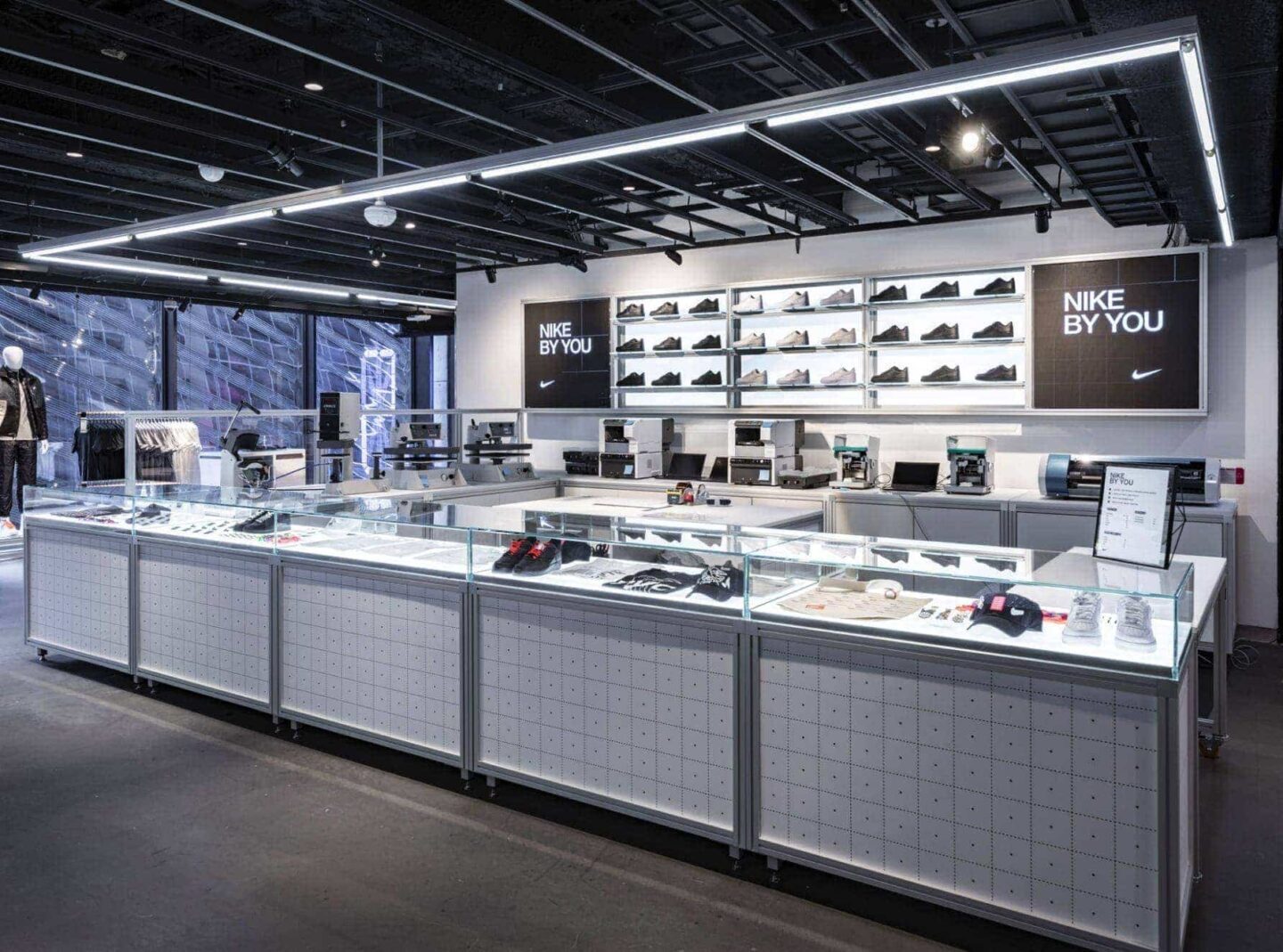
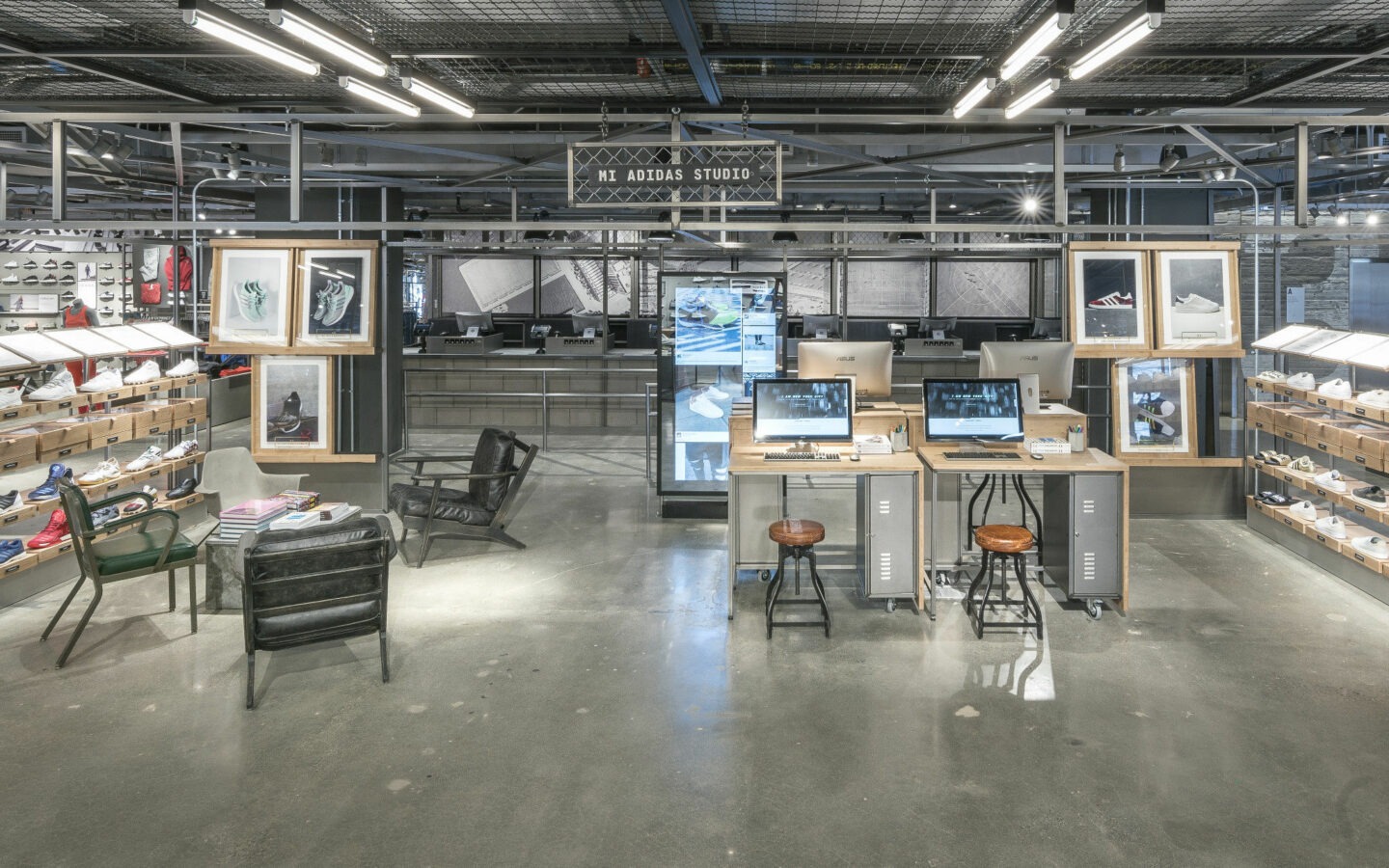
Retailers of all types know that they need to offer their customers unique, exclusive in-store experiences if they are to compete against the convenience of their online rivals. As leaders of the pack in their field, both Nike and Adidas provide unmissable, multi-sensory experiences that enable shoppers to interact with the brands on a personal level.
In both stores, shoppers are able to design their own trainers with the help of specialists working at dedicated customisation labs. They can choose the materials, colours, personalisations and special features before seeing their creations being made right before their own eyes. This type of experience is incredibly popular with shoppers of all ages, and is proven to be a highly-effective way of increasing footfall and excitement in physical retail spaces.
5. Interior Aesthetic
Both stores are awash with the most on-trend design features and hyper-relevant cultural references. Nike’s store takes its inspiration from the high-tech aesthetic of science laboratories whilst the Adidas store has more of a sports stadium feel to its interior.
Nike and Adidas really are setting the tone for retail and interior design trends across the world with these flagship stores. Brands in a wide range of sectors – retail, hospitality, leisure and more – are all following suit with the use of laboratory-inspired design schemes that are packed full of digital enhancements, cutting-edge technologies and precision-engineered fixtures.
6. Brand Messaging
Both brands communicate with their customers in a variety of ways, subtle and direct. They fill their stores with the latest innovations and trends from the world of retail design to create environments that are ultra-relevant to their identities as pioneers.
Graphic displays
Both stores use large-format graphics to create visually-arresting spaces that make a real impact on shoppers. These graphics do, though, have relatively simple colour palettes (mainly white, black and grey interspersed with pops of primary colours) to match the stripped-back aesthetic of the interior design schemes of both spaces.
Nike’s store features more hyper-local imagery than Adidas’, displaying photos from the surrounding New York boroughs to make the space utterly unique to its immediate area. Supporting this is the Nike Speed Shop – a dedicated section of the store that uses local data to stock and re-stock its shelves based on what the community wants.
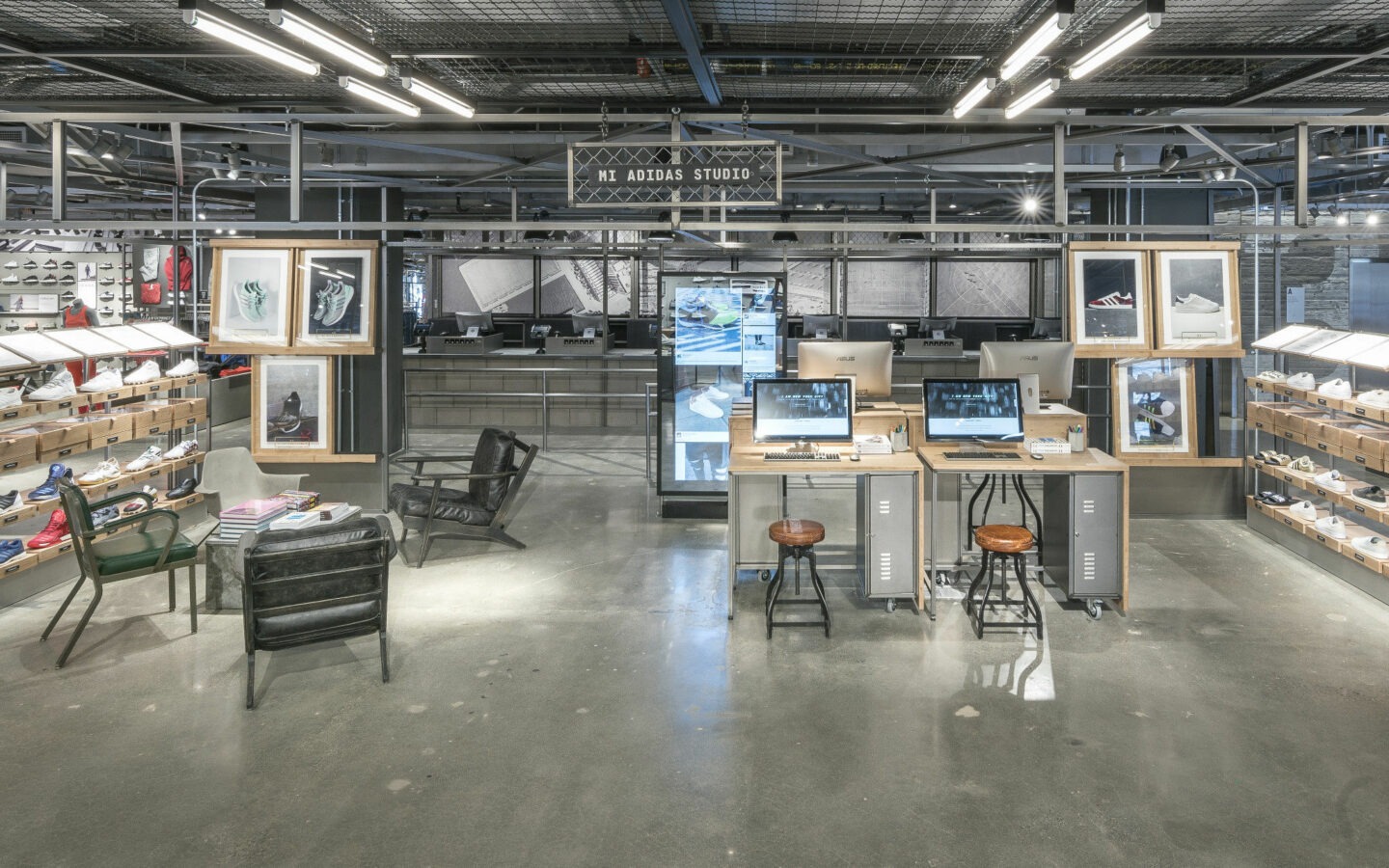
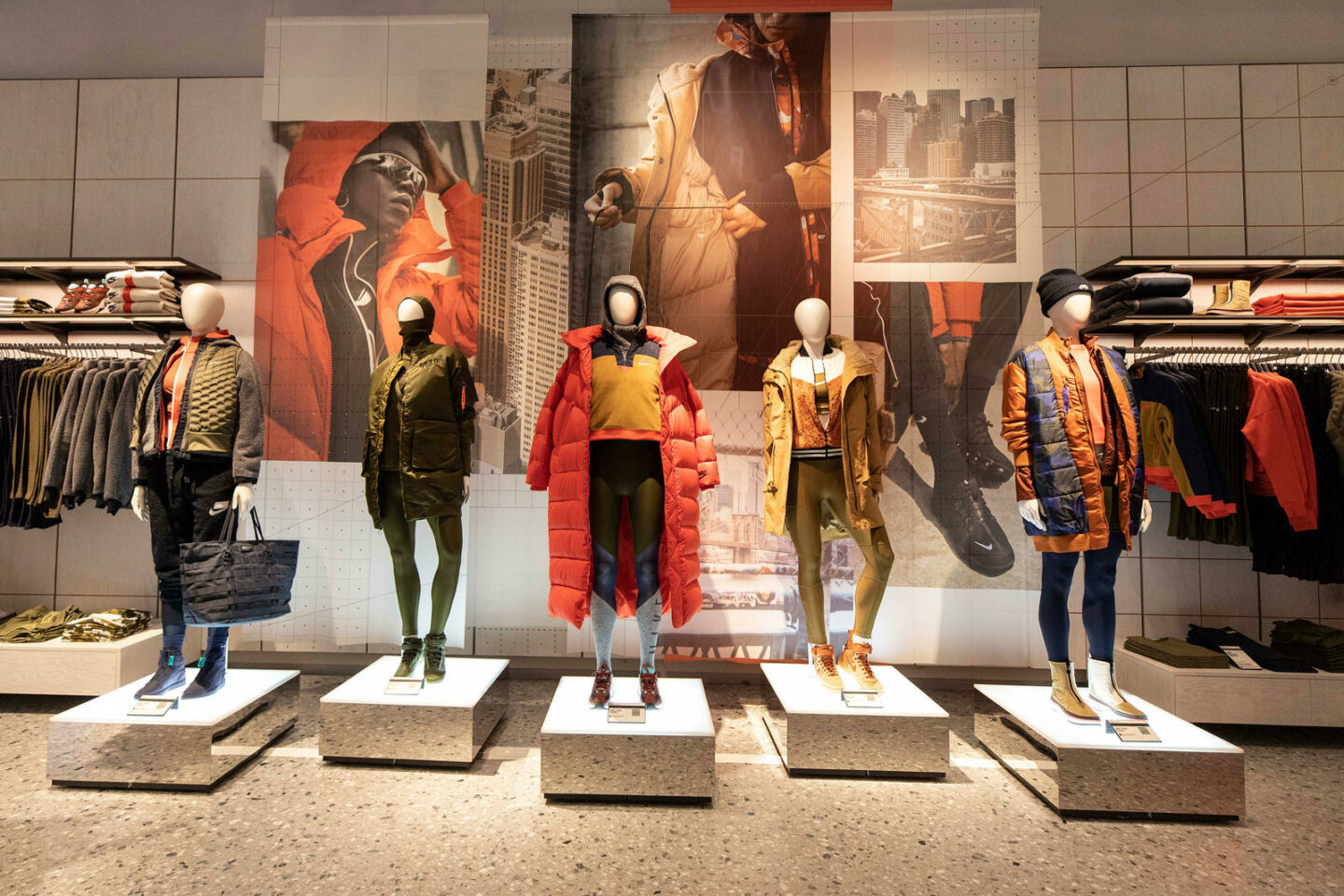
Signage
Nike and Adidas both use bespoke illuminated signage to highlight key product ranges and experience zones along with multi-storey screens displaying branded videos and product promotions.
As with the wall art, Nike’s New York store includes more hyper-local signs that show data, news updates information that is relevant to the NYC area. This makes the space utterly unique and encourages shoppers to connect with it on a more personal level as it feels like it is designed specifically for them.
Summary
These two sporting giants have both created fabulous stores in New York, achieving retail environments that are tourist destinations in their own rights. They offer a theatrical shopping experiences which are enhanced through sleek brand communications and effective product presentation.
Nike’s store incorporates more hyper-local features, such as realtime data from the immediate area that is used to inform product and experience offerings and enable customers to make more meaningful connections with the Nike brand.
Adidas has worked hard to offer a wider range of technologies into its store, such as virtual reality equipment, which is a major draw for Gen-Z shoppers looking to experience the latest digital innovations.
Overall, it’s quite difficult to say with any conclusivity that either one of the stores is better than the other, as both are exceptional exmaples of what physcial retail spaces can be if designed with customer experience in mind.
Both Nike and Adidas have demonstrated that traditional bricks and mortar retail still has a very valuable role to play in the retail sector, and continue to shape the landscape of retail design on an international scale.
To learn more about creating store environments that deliver unmissable customer experiences, browse our range of retail solutions or speak to our team here.
architectural lighting Bespoke Branded Display Ceiling Lightboxes Commercial Interiors Customised Events Exhibitions Exhibition Stand Design Exhibition Systems Graphic Displays graphic lightbox Illuminated signage Integrated Lighting Interior Design Interior Lighting Lab-35 LED Display Lighting Ledge 65 Ledge 65 Corner LED Lightboxes LED Lighting LED Signage Light Bars Lightbox Lightboxes Lighting Lighting Design Light Panel Modular Displays Modular Exhibition Stand Modular Systems Physical Retail Product Display Retail Retail Design Retail Displays Retail Lighting Retail Shelving Store Design Store Lighting Tension Fabric Systems TFS Unibox System Visual Merchandising

